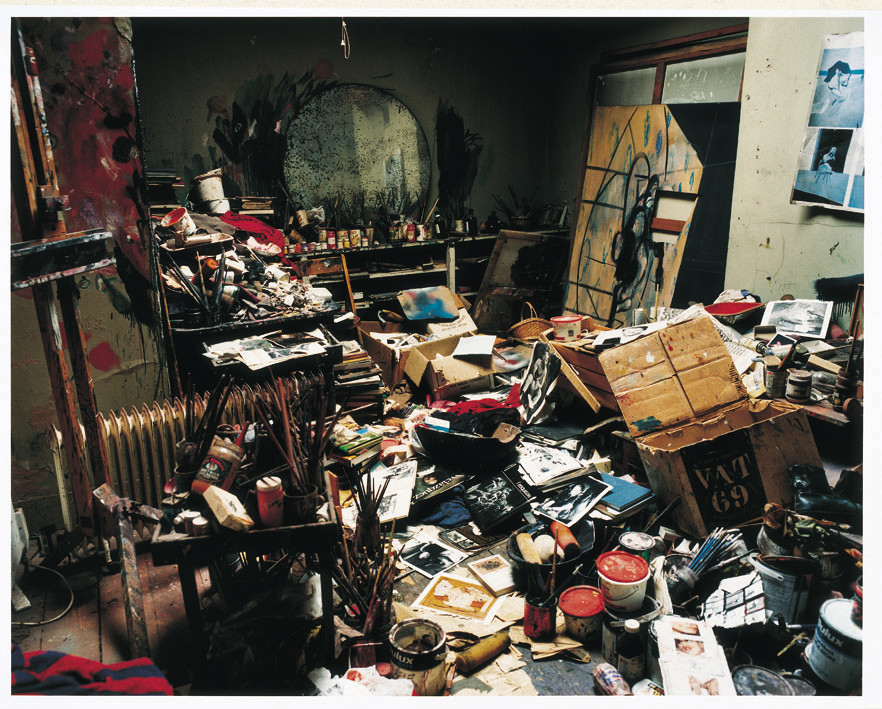
The Artist’s Studio, a recently published book by James Hall, explores the myth and reality of the creative workspace. Francis Bacon (along with contemporary Lucian Freud) is an artist whose chaotic physical studio space has become almost as renowned as his creative output.
Bacon lived and worked in many places, from Paris to Tangiers, but perhaps the most important workspace in Bacon’s life was his studio at 7 Reece Mews, a converted coach house in South Kensington, which he took over in 1961. Over the years it became an overwhelmingly cluttered space with vibrant daubs and accretions of paint on the walls and doors. In later life, despite occasionally acquiring new and more spacious places to work, he always returned to this awkward but familiar room. He once told friend and art critic David Sylvester that “I just knew from the very moment that I came here that I would be able to work here.”
Within months of moving into Reece Mews, he produced his first large-scale triptych, Three Studies for a Crucifixion, 1962. As art critic and expert Martin Harrison writes, this painting signified a turning point for the reception of Bacon’s work:
“The perception that Bacon had lost his way since 1957 was soon reversed on the debut of this monumental triptych.”
Excerpt: Martin Harrison, Francis Bacon: Catalogue Raisonné (London: The Estate of Francis Bacon Publishing, 2016 p. 686).
The studio became Bacon’s complete visual world. Its heaps of torn photographs, fragments of illustrations and artist’s catalogues provided nearly all of his visual sources.
As depicted in Perry Ogden’s photography of the studio, the space was beyond untidy, littered with photographs, canvases and newspaper cuttings, with just inches of floor space to spare. Close friend John Edwards once described it as an “unbelievable mess”. But this suited Francis Bacon, who told Sylvester: “I feel at home here in this chaos because chaos suggests images to me.”
Bacon’s artistic output certainly seemed to reflect this comfort in the chaotic space, as Bacon was exceptionally productive, by his standards, in the years following his move to 7 Reece Mews, completing many large-scale triptychs there such as Triptych Inspired by T S Eliot’s Poem ‘Sweeney Agonistes,’ 1967 (also known as Triptych, 1967).
The studio, where Bacon had worked for over thirty years of his life (1961 until his death in 1992), was donated by John Edwards to The Hugh Lane Gallery, Dublin in 1998. It was reconstructed in the Gallery and opened to the public in May 2001.
Find out more about Francis Bacon’s life on our website here.